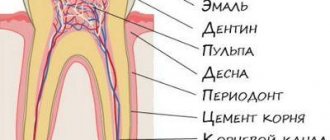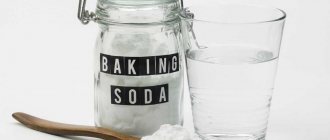© Author: Sazykina Oksana Yuryevna, cardiologist, especially for SosudInfo.ru (about the authors)
The incidence of cardiovascular pathology in recent years has not only been steadily increasing, but is also rapidly becoming younger. In this regard, the preventive focus of primary care physicians continues to be relevant to this day. This is achieved through adherence to the principle “it is easier to prevent a disease than to treat its consequences.”
In order to know how to strengthen the heart and prevent the development of its diseases, you should be aware of what the risk factors for their occurrence are. In this case, preventive measures aimed at preventing cardiac pathology, coupled with properly selected food products, and in some cases with medications, will have a beneficial effect on the heart muscle. Otherwise, without eliminating risk factors that a person can influence independently, none of the medicinal plants will have the expected effect on the cardiovascular system.
What are the risk factors for heart disease?
In addition to the main reasons that can cause the development of a particular cardiac disease (genetic disorders, heart defects, kidney pathology due to hypertension and others), the doctor must remember the risk factors for the development of cardiovascular diseases and assess the degree of risk in each individual patient. The patient, for his part, also needs to keep these factors in mind, and not forget that most of them can be easily corrected, and in their absence, the heart will remain healthy, strong and resilient throughout life.
The main generally accepted factors that can cause adverse consequences of cardiac diseases, and, in particular, significantly increase the likelihood of developing acute myocardial infarction and sudden cardiac death, include the following:
- Gender and age have a direct relationship with the development of cardiac pathology - most often men over 40 years of age are susceptible to it. This group of patients needs to pay special attention to possible changes in fat (hymercholesterolemia) and carbohydrate metabolism (diabetes).
- An increase in body mass index up to obesity (above 30 kg/m2), especially in combination with an increased level of cholesterol in the blood (above 5.0 mmol/l), promotes the deposition of atherosclerotic plaques in the inner wall of the arteries, which is most significant for the aorta and for the coronary (feeding heart) arteries.
- Diabetes mellitus leads to the negative effect of excess glucose on the vascular intima, which, in combination with atherosclerosis, negatively affects the integrity of the vascular wall from the inside.
- Arterial hypertension is characterized by increased vascular tone, which leads to impaired blood supply to internal organs and to constant hard work of the heart.
- Bad habits - alcohol and smoking contribute to damage from the inside of the inner lining of blood vessels (intima).
Tips for preventing heart disease
It's no secret that preventing a possible disease is much better, healthier and cheaper than dealing with an already existing disease. That is why, before starting treatment with folk remedies, it is necessary to strengthen the cardiovascular system, which is not just important, but necessary for a long and healthy life.
If you are obese or even 5-10 extra pounds, it is extremely important to get rid of the ballast that stands in the way of health and longevity. The best way to combat fat deposits is with proven folk remedies, the main one of which is a special diet that excludes fatty and fried foods, sweets and products made from white flour. Do not forget that with proper nutrition, the daily diet should consist of 50-60% fruits and vegetables.
What preventive measures will help strengthen your heart?
Everyone knows that a healthy heart is the key to a long, happy and, importantly, high-quality life. In this case, quality means the existence of a person not only without unpleasant subjective symptoms, but also without the need to depend on daily medication for any heart disease. In order to strengthen the heart muscle and keep it healthy for many years, it is enough to regularly follow a number of simple rules regarding a person’s lifestyle. This is called the prevention of cardiac diseases. There are primary prevention, aimed at preventing risk factors for heart pathology, as well as secondary, aimed at preventing complications in an already developed disease.
First, let's look at the first concept:
So, primary prevention in cardiology, which allows you to strengthen the heart, is based on the following components - lifestyle , proper and rational nutrition , as well as adequate physical activity . It makes sense to talk about each of them in more detail.
Rules that will help strengthen the cardiovascular system:
- watch your weight. Remember that a full stomach harms the functioning of the cardiovascular system;
- Don't forget about cardio exercises. Just 15 minutes of running, swimming or race walking a day can increase your life expectancy by at least 10 years;
- strengthen your spine. The work of each organ directly depends on the central nervous system. Diseases of the spine lead to disturbances in the outflow of blood, which is why a sufficient amount of oxygen does not reach the heart, which leads to diseases of the cardiovascular system;
- forget about bad habits. Smoking, love of strong coffee and alcohol consumption lead to arrhythmia and coronary disease of the main “motor” of the body;
- limit your salt intake. Excess salt retains fluid in the body. This can lead to hypertension, swelling and place additional stress on the heart muscles. Add foods rich in calcium and magnesium to your diet: cabbage, pumpkin, parsley, sesame seeds, dried apricots and almonds. They help remove excess water from the body and strengthen the cardiovascular system.
Lifestyle correction
A person who thinks about his health in general, and about strengthening the heart in particular, should understand that giving up bad habits is the most important aspect in reducing the risk of developing heart disease. Thus, smoking and alcohol cause increased heart rate, or tachycardia, and with constant tachycardia, the human heart experiences an increased need for oxygen, which is delivered to it through the coronary arteries. At the same time, the coronary arteries can already be changed due to atherosclerosis or diabetes mellitus. Therefore, the blood supply and oxygen supply to the heart of a person who smokes and abuses alcohol suffers, which leads to myocardial ischemia and can sooner or later cause an acute heart attack.
The elimination of stressful situations is of great importance in improving the health of the body . The modern pace of life of people, especially residents of megacities, is often accompanied by high psycho-emotional stress. Hans Selye proved that stress has an extremely negative impact on the human body. And constant stress, repeated day after day, leads not only to disruption of the adrenal glands, but also has a direct effect on the activity of the heart and blood vessels due to a significant release of adrenaline and cortisol into the blood, which contribute to an increase in heart rate and, accordingly, tachycardia. First - sinus, and as the myocardium weakens and deficiency of microelements - more serious forms of arrhythmias. In addition, there is a high risk of developing stress-induced diseases, including diabetes and some autoimmune processes. That is why many large companies currently use psychological relief rooms and conduct appointments with a full-time psychologist. If the patient does not have these activities at work, he should visit a psychologist or psychotherapist to create psychological comfort and maintain mental health.
the organization of a daily routine was widely promoted back in Soviet times. During sleep, your heart rate slows down and your breathing rate decreases. Skeletal muscles that are at rest during sleep require less blood and oxygen, causing the heart to pump more easily and the heart muscle to experience less stress.
Therefore, to strengthen the heart muscle, a person must sleep at least eight hours a day. And athletes involved in physical exercise - even more, to achieve full restoration of all body systems, incl. heart muscle.
What foods are good for the heart?
— Juice from red grape varieties. Helps significantly reduce the likelihood of a heart attack. A glass of fresh juice a day will help reduce the occurrence of blood clots and clear clogged blood vessels. In this regard, grape juice works better than aspirin, reducing platelet activity by 75%, while aspirin is only 45% effective. - The well-known folk method - two glasses of skim milk a day - will help reduce the likelihood of heart attacks. — Diversify your diet with foods rich in vitamin E - cottage cheese, vegetable oil, vegetables. — Eating low-fat sea fish and walnuts several times a week will help you forget about myocardial infarction.
Art therapy to strengthen the heart It is not for nothing that the human heart is called a “tangle of emotions.” An abundance of stress, anxiety and nervous breakdowns greatly undermine the functioning of the cardiovascular system. Protect yourself, if possible, with pleasant people and favorite works of art. Beautiful landscapes, soft instrumental music and many other pleasant little things will give your heart health, and you peace and longevity.
Art therapy is an equally effective medicine for blood vessels. With an impending attack of irritability and anxiety, your favorite hobby will help - painting pictures, writing poetry, embroidery or knitting. You should not focus on problems and troubles, because in life there are many pleasant things worthy of attention.
Balanced diet
Proper nutrition should not be confused with heavy, exhausting diets, with which the patient brings himself to severe starvation, and after a short time begins to eat everything again. A balanced diet means eating healthy foods that are balanced in the amount of proteins, fats and carbohydrates. At the same time, “junk” foods are excluded, and the eating regimen should be regular, preferably at the same time, at least four times a day. The last meal is at least 4 hours before the night's rest.
Due to the fact that excess “bad” cholesterol is deposited in the walls of blood vessels and leads to the development of atherosclerosis and blocking of their lumen, it is necessary to exclude and limit the following foods:
- Fast food, instant food, and any other products with a high content of animal fats, sugar and a high glycemic index,
- Fatty meats
- Fried dishes, fried in lard, butter,
- Saltiness, smokedness, spices,
- Confectionery,
- Limit your consumption of egg yolks to 2-4 per week.
The following foods are welcome:
Dairy and fermented milk products of moderate fat content, cottage cheese,- Grain and cereal products (uncooked and crumbly porridge, bran, wholemeal bread),
- Lean meat and fish, boiled, baked or steamed,
- Vegetables and fruits, raw, stewed or baked,
- Egg white,
- Among sweets, it is permissible to eat candied fruits, dried fruits, and low-fat soufflé.
Regarding patients with a predisposition to cardiac diseases or with an existing pathology, special mention should be made of limiting the daily intake of table salt (no more than 5 grams) and the volume of liquid drunk (no more than 1.5-2 liters).
Of course, it will be quite difficult for many patients to immediately give up their usual diet when they want to eat richer and larger foods. But it is still necessary to rebuild, since, even despite the absence of heart symptoms, the patient himself forms a predisposition in his body to cardiac pathology. For example, patients with diabetes have long been conditioned to think that diabetes is not a disease, but a way of life. It should also be the case for patients seeking to keep their heart healthy - they must clearly understand that lifestyle correction comes down to properly organizing your daily routine and comparing it with regular meals at the same time. Moreover, the food should not only be healthy and wholesome, but also varied and tasty, otherwise such events will be perceived by the patient as a painful diet.
What foods are most beneficial for the cardiovascular system?
- Nuts. This product contains a balanced amount of vitamins and microelements that help strengthen not only the heart and blood vessels, but the entire body as a whole. The first place is firmly occupied by walnuts; the second place in terms of the content of omega-polyunsaturated fatty acids, which help normalize cholesterol metabolism, is occupied by almonds. Persons with an allergic predisposition should use nuts with caution.
- Berries and fruits. Pomegranate, apples, grapefruit, strawberries, currants, raspberries, cherries, cherries and rose hips are most beneficial for the heart. The beneficial effects of the juice and fruits of these plants are explained by their high content of vitamins, potassium, magnesium and iron.
- Lean meat and fish (cod, tuna, sardine, veal, turkey) are rich in protein and B vitamins. Fatty fish of the “noble breeds”, in particular, the salmon family, in turn, are rich in omega-3 fatty acids, which promote better absorption of fat .n.z. “good cholesterol” (HDL) and the removal of “bad cholesterol” (LDL).
- Vegetables. Avocados and pumpkin seeds, for example, are also rich in omega-3 fatty acids. In turn, excess “bad” cholesterol can be leveled out within a few months of starting a balanced diet. Onions, garlic and broccoli contain microelements that help normalize vascular tone (reduce high blood pressure), as well as the proper contraction of muscle tissue cells.
- Cereals and grain products. Oats, buckwheat, wheat, rice, wholemeal bread are a storehouse of valuable B vitamins necessary for the normal functioning of all internal organs, including the heart.
Video: Channel 1 about heart-healthy foods
Recipe for heart disease
We pass 3 lemons through a meat grinder, be sure to add 15 g of ground cloves, 100 g of honey, 0.5 l of vodka. Mix everything and leave for 10 days. After this, we dilute it with water approximately so that we get three liters of total volume.
And we drink 3 tbsp before meals. l., course for a month.
A tincture of lilac flowers helps relieve heart pain. Fill a 0.5 liter jar with flowers and fill it to the top with good moonshine. If necessary, drink 1 tsp. tinctures, washed down with water.
And taking this balm allows you to strengthen the cardiovascular system and immunity. In the spring, as soon as the first leaves, various flowers, berries, fruits, nuts appear, fill a bottle with them and fill it with moonshine.
The resulting balm consists of 28 components. Take it daily, 1 tbsp. in the morning on an empty stomach. An hour later - breakfast.
Physical activity
Physical activity for a healthy person should be moderate, especially if the person has not previously been involved in sports or physical activity, and suddenly decided to start doing it. The heart must be subjected to a feasible load. It is enough to start with a little exercise in the morning. Then add light jogging, swimming in the pool, and play sports. As a base exercise, it is recommended to perform the following: squats, swings of arms and legs, bends to the side, push-ups, abdominal exercises, stretching.
As an optimal example, aerobic exercise training can be recommended for beginners without cardiac pathology who are starting to actively engage in sports. cardio exercise in reasonable quantities. With increasing training time based on endurance, heart rate and well-being. The best options for this are elliptical trainers, jogging, or on a treadmill. It is important that for effective training you need to choose not extreme loads, but longer, but “feasible” ones. The pulse should be in the “aerobic zone” - best between [(190 beats/min) minus (age, years)] and [(150 beats/min) minus (age, years)]. Those. for a 30-year-old person, the effective and relatively safe zone for strengthening the heart muscle is from 120 to 160 beats per minute. (It is best to take low-medium values, i.e. 120 – 140 beats/min, especially if you are insufficiently trained).
recommendations for monitoring heart rate during cardio training
For people with a healthy heart who are already exercising professionally or doing regular exercise in fitness centers or gyms, the exercise program should be drawn up individually with the help of a trainer, and increased in doses and gradually.
As for the activation of a patient with existing cardiovascular diseases, it should be carried out only after consulting a physical therapy doctor.
Video: examples of gymnastic exercises to strengthen the heart
Video: example of a cardiologist's opinion on heart training
Causes of heart pain
The pathological state of the cardiovascular system can be provoked by various internal or external factors. Most often, concomitant diseases are the culprits of the painful symptom. For example, a disease such as vegetative-vascular dystonia or myocarditis is characterized by a feeling of heaviness behind the sternum and interruptions in the rhythm of contraction of the heart muscle.
Possible sources of discomfort:
- diseases of the musculoskeletal system (osteochondrosis, spondylitis often cause disturbances in blood circulation and, as a result, pain);
- neuroses (strong emotional experiences harm all internal organs);
- pregnancy (hormonal changes often provoke discomfort in the chest area);
- severe physical overload (excessive load leads to vasoconstriction);
- bad habits (alcoholism, drug addiction are the most common sources of heart failure).
Separately, mention should be made of breathing pathologies. When inflammation of the lungs or damage to other organs responsible for the supply of oxygen occurs, severe heart pain appears.
Is there any point in taking pills?
Medications for primary prevention, that is, for influencing a healthy heart, are in principle not necessary. However, as prescribed by a doctor, patients with existing chronic diseases of other organs (bronchial asthma, diabetes mellitus, pyelonephritis) can be recommended to take microelements - potassium and magnesium , which are contained in the preparations Asparkam, Magnevist, Magnerot, Panangin, Magnelis Forte, etc.
A healthy person should not rely on medications; a complete diet and preventive courses of taking regular vitamins twice a year are enough (Alphabet line, Undevit, Complivit, etc.).
If there is insufficient intake of substances necessary for work, maintaining health and regeneration of the heart muscle from food (for example, amino acids), such conditions can be corrected by prescribing dietary supplements, sports and special nutrition. However, the best option is to get everything you need as part of a balanced diet.
In any case, the optimal solution for healthy people who want to “strengthen their heart” with the help of vitamins, mineral supplements and dietary supplements is an individual consultation with a cardiologist and laboratory determination of the level of trace elements in the blood, followed by the prescription of the necessary substances, best of all – not in tablets, but in the form of a supplement diet with foods rich in them.
Video: example of opinion on athletes taking more serious heart drugs
(!) We do not recommend uncontrolled use of any heart medications without a doctor’s prescription!
But certain medications for secondary prevention, that is, for persons with existing heart disease or with a burdened premorbid background (obesity, hypercholesterolemia, hypertension, heart defects, cardiomyopathy), are often required to be taken . Thus, in patients with hyperlipidemia (hypercholesterolemia), even without clinical manifestations, it is mandatory to take statins (! if within six months it was not possible to correct the level of cholesterol in the blood only with the help of diet).
In patients with ischemia, it is necessary to take nitrates and beta blockers (bisoprolol) in order to reduce the frequency of painful attacks and reduce the risk of sudden death from cardiac causes. Patients with hypertension are required to take ACE inhibitors (enalapril) or sartans (losartan) for organoprotective purposes, because these drugs protect the heart itself, blood vessels from the inside, kidneys, retina and brain from the negative effects of high blood pressure.
The use of folk remedies for cardiac arrhythmia
Home therapy for the treatment of arrhythmia gives good results with a measured lifestyle, good sleep, and quality food. To strengthen the heart, doctors recommend eating more plant foods containing microelements: bananas, dried apricots, nuts, honey, celery, parsley. You should exclude sugar, fried and fatty foods, coffee and give up bad habits. In addition, after consulting with your doctor, use folk remedies to treat your heart at home. Here are a few recipes for arrhythmia:
- Onion and apple. Grate the ingredients, mix and divide into two parts. Consume after breakfast and lunch for a month.
- Walnuts and honey. Grind 120 g of peeled nuts, add 600 g of honey, mix. Use a tablespoon (tablespoon) 3 times a day.
- Valerian (root), raspberry (bark), motherwort and calendula. Grind everything, take the same amount of each raw material, mix. Take two teaspoons of the mixture per glass of boiling water and place in a water bath for ¼ hour. Take two sips several times a day.
- Calendula. Brew a tablespoon of crushed flowers with ½ liter of boiling water and leave. Before meals, drink ½ glass.
- Hawthorn berries – crush 30 fresh berries with a hammer. Add a glass of boiling water, place on low heat, and simmer for ten minutes. Take small sips throughout the day.
Many people, when their heart rhythm is abnormal, try various folk remedies, test them on themselves, and recommend them to others. Here are some reviews on the treatment of cardiac arrhythmia with folk remedies:
- Horsetail helps relieve heart palpitations. For infusion, take a tablespoon of raw material and pour 0.5 liters of boiling water, leave for several hours, strain and drink up to five times a day with a tablespoon.
- Another recipe was used to treat cardiac arrhythmia and after three courses of use it gave a positive result. It consists of the following: put three glasses of viburnum berries in a three-liter jar and add two liters of water, insulate and leave overnight. Strain, grind the berries, add honey and pour in the strained infusion again. Drink 1/2 glass before meals for one month, then take a break for a week and a half. Then repeat the treatment.
Before using prescriptions, consultation with a doctor is required. During treatment, it is necessary to monitor the pulse rate.
How to strengthen the heart with folk remedies?
Below are some means for strengthening the heart muscle and vascular wall, known to people many decades ago. Belief in their effectiveness is a personal matter for everyone. It is important that patients with existing pathology or those at risk combine traditional methods with treatment prescribed by a doctor and with his knowledge.
Recipe 1. Peel and mince five heads of garlic, mix with the juice of ten lemons and five hundred grams of honey. Take 4-5 teaspoons daily for about a month. (It is believed that this mixture helps remove excess bad cholesterol, including that already deposited in the arteries).
Recipe 2. Pour crushed calendula flowers (marigolds) into a glass of boiling water, leave for 15 minutes, strain and bring the volume to one glass. Take half a glass twice a day for about two weeks.
Recipe 3. 4 tbsp. Mix spoons of onion juice with 4 tbsp. spoons of honey. Take 2 tbsp. l. x 4 times a day – 1 month. Prepare a new mixture daily. (This mixture, like the previous one, has a general strengthening effect).
Recipe 4 (for the “stressful” nature of hypertension). The so-called “chatterbox” - buy at the pharmacy or prepare yourself alcoholic tinctures of hawthorn, peony, valerian, motherwort and Corvalol, mix in a larger container and take 15 drops x 3 times a day for a month, and subsequently in stressful situations.
The use of medicinal plants and the use of folk recipes, both for the purpose of prevention and treatment, should be carried out with extreme caution. Unlike pharmaceuticals, which are tested in multicenter studies, the effects of plants on the human body have been little studied. In most cases, no one can isolate the active substance from a plant and study its absorption, distribution to organs and excretion. That is why uncontrolled use of various herbs, infusions, and decoctions without the knowledge of the attending physician can do more harm than good.
Drugs to strengthen and maintain the heart muscle
You can also strengthen your heart muscle through pharmaceuticals. This is an extreme measure, but most often it is impossible to do without it.
What names and groups can be recommended:
- Preparations for the protection of myocardial tissue. So-called cardioprotectors. Mildronate, Riboxin and others from this group. To support the heart of an elderly and young person, it makes sense to take cardioprotectors for a long time, because they directly affect metabolic processes in myocardial tissue, reduce the need for oxygen, and restore trophism (nutrition).
- Vitamin and mineral complexes with potassium and magnesium. Magne B6, Asparkam or Panangin and many others can nourish the heart and improve its functioning. It is not recommended to drink without permission, because the likelihood of side effects is high. The best solution would be to consult a specialist.
Other medications are used only for diagnosed and confirmed diseases, such as chronic heart failure. Therefore, there is no point in prescribing them without indications. This can be deadly.
What drugs are we talking about?
- Glycosides. They restore and enhance the contractility of the heart, they are used with great caution, because such drugs have a lot of side effects and are difficult for patients to tolerate with prolonged use.
- Diuretics. Diuretics to reduce the load on cardiac structures. Medicines allow you to remove excess fluid and restore normal circulating blood volume.
- Antihypertensive. ACE inhibitors, centrally acting agents, calcium channel blockers and others. If necessary, if excess pressure develops, which is not corrected by natural methods. The doctor also selects dosages and constantly “adjusts” them if necessary.
- Antiplatelet agents. To normalize blood fluidity. Not always required. Typically these are Aspirin-based brands suitable for long-term use (for example, Thrombo-ass and others).
Drugs for strengthening the heart muscle are cardioprotectors like Mildronate or medications whose effect is based on the normalization of ion exchange: Asparkam and others.
Others are not used without indications, because they are extremely dangerous and can lead to unpredictable consequences.











